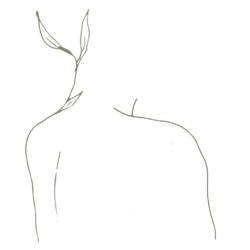Holidays are ending slowly, and we are getting in touch with our work, restarting our daily routine and the usual rythm. It is now a good moment to stop and reflect on how we would like to start the new season. The rest we had, the mental space, the time with no hurries, the contact with nature and the open space, has allowed us to connect with a more organic rythm, with our senses and our authentic needs, it is possible that we feel more quiet and balanced.
The challenge of starting anew with our obligations and with the accelerated pace can produce some anxiety and we wonder how we can sustain this serene state, focused mind and active body.
It is important to make space to become aware of what we want and for this we need a clear and determined mind. Give yourself a transition time between the period of rest we have enjoyed and the start of our activity. Deciding what our purposes will be, how we will activate, without straining or speeding up. If necessary, we can write it down to specify our decisions.
A good way to do this is to set aside time each day to stop, calm the mind and attend to the body, it allows us to be in the present moment. If you lie on the floor, with a book under your head, so that it supports you and you can rest your back and loosen your neck. Your legs bent with your feet resting and your hands resting on the trunk. You can bring your attention to the body, observe it and take a tour from toe to head, or if you prefer, from head to toe. If your attention wanders to other thoughts and you notice it, that’s good, because then you have the opportunity to get back on the path you were on.
Then transition to standing up, using your supports, and notice, now, how your balance is and if you feel calmer again.
I recommend that you do this practice daily, about 15 or 20 minutes will be enough. Then resume your routines and activities. I also encourage you to continue attending to the present moment while you are busy doing your tasks. Bringing attention to the body will allow you to do this and is a way to cultivate serenity.
tecnica-alexander.eu/…/REPÓS-CONSTRUCTIU.pdf

If you need more information, in Kilibra cos . ment . moviment, we can help you… Contact us
 / sci_ani
/ sci_ani  / scianimation
/ scianimation 


